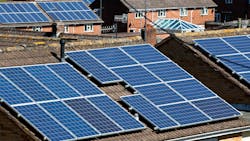SSEN and LEMA Launch Community Smart Access to Accelerate Low-Carbon Housing Connections
Scottish and Southern Electricity Networks (SSEN), in collaboration with the Local Energy Markets Alliance (LEMA), has introduced Community Smart Access, a new initiative designed to facilitate faster electricity connections for low-carbon housing developments. The program aims to optimize local electricity demand while long-term grid reinforcements are underway.
Community Smart Access will utilize Dynamic Load Averaging (DLA) to support the deployment of Low Carbon Technologies (LCTs) such as heat pumps, electric vehicle (EV) chargers, rooftop solar panels, and battery storage in new residential areas. As demand for these technologies increases, the initiative seeks to address network capacity constraints by providing a short-term solution to support new housing developments.
Community Smart Access is structured to enable the procurement of flexibility services, ensuring that new housing projects can proceed even in areas with limited grid capacity. The service aligns with industry advancements, including Access Products and Flexibility Services outlined in SSEN’s Flexibility Roadmap.
Nigel Bessant, Head of Network Operations at SSEN Distribution, said, “Community Smart Access provides a pathway to accelerate housing connections while integrating sustainable energy solutions. LEMA members — including Traxis Energy, ElectraLink, and Gemserv — have collaborated to develop the Dynamic Load Averaging concept into a scalable solution, with trials planned for this year.”
Simon Anderson, CEO of LEMA, emphasized the role of DLA in addressing grid constraints, “Dynamic Load Averaging is a key mechanism to enhance grid flexibility and support the development of all-electric homes. As the UK plans for significant housing growth, optimizing local energy infrastructure will be critical. Integrating well-insulated, all-electric homes with smart energy solutions offers a pathway to reducing energy costs, improving sustainability, and strengthening energy security. The Dynamic Load Averaging Service is designed to help achieve these objectives.”
The initiative represents a collaborative effort to facilitate the transition to a low-carbon future while supporting the housing sector's growth and sustainability goals.
